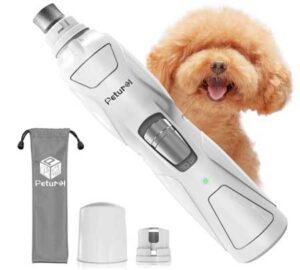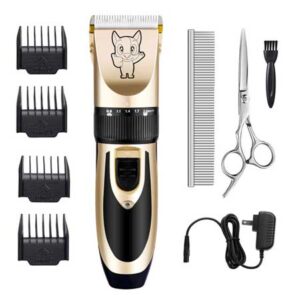Last Updated on 1 year ago by Nicky Johnson
You have finally made the commitment to insure your newly gotten dog or cat. However, once you begin comparing plans, you will realize that you will need to settle on a deductible.
Deductibles are similar to what you may be accustomed to hearing in human health insurance policies. But if you’re not sure what is a pet insurance deductible and how it actually works, read on to learn more about it.
However, if by the end you still have some questions, make sure to contact a reliable pet insurance broker that will address all of your concerns.
Deductibles in Pet Insurance: What Do They Mean?
Blog Contents

A deductible is an out-of-pocket cost that you, the policyholder, must bear before the insurance company begins paying for covered expenses. Deductibles range from $100 to $1000.
For example, if you choose to pay a $200 deductible, you must pay it in full for the insurance to cover your vet costs.
In most cases, deductibles are calculated once a year. If your pet requires treatment on January 1 that will cost $200 or more (assuming a $200 deductible), the insurance company will pay for it, minus your reimbursement percentages, throughout the rest of the year.
However, the kind of deductible you choose will determine whether it is applied every year or not.
Deductibles vs. Reimbursement Percentage
The deductible and the percentage of reimbursement are two separate concepts. Both terms indicate out-of-pocket expenditures.
You must first pay your annual deductible. When the deductible is paid in full, the reimbursement percentage is applied.
For example, if you have a 90% reimbursement percentage, it means the insurer will pay 90% of the vet cost once the deductible is reached, and you will pay 10%.
So, let’s assume you received a vet bill for $1,000 and your coverage has a $200 deductible and a 90% reimbursement rate.
The total cost would be $800, with the deductible taking up $200 of that. You’ll be responsible for 10% of this, or $80; the insurer will cover the remaining 90%.
Types of Pet Insurance Deductibles
The three major types of deductibles are:
Annual Deductibles
The majority of pet insurance policies use this deductible structure. All policy-covered conditions are subject to these yearly limitations.
Assuming a yearly deductible of $200, you’ll be paying for the first $200 of covered veterinary expenses before your coverage kicks in.
The yearly deductibles are the simplest choice for most pet owners. This way, the deductible becomes a potential concern only when you file a claim in that year.
This is the best option for pets in good health, puppies, kittens, and owners seeking ‘catastrophic coverage’ for their animals.
Annual Per-Condition and Incident Deductibles
This deductible applies to each separate event and is reset annually. Every time your pet has a new health problem, for instance, an ear infection, you’ll have to pay the deductible again.
However, if you have a high deductible, the insurance may not kick in until your pet has its third or fourth ear infection during a policy year.
Lifetime Per-Condition Deductibles
As the name implies, this deductible applies every year for the duration of the policy, making it ideal for chronic, lifelong diseases.
If you think your pet may have a condition like diabetes, hypothyroidism, or chronic renal disease, a lifetime deductible policy may be a suitable choice.
This kind of coverage can be especially useful for senior pets, breeds with chronic health problems, and obese animals.
Did you know that one of the most frequent health issues in cats and dogs is obesity? It impacts over 40% of pets worldwide.
Which Is Better, a Higher or Lower Deductible on Pet Insurance?
In general, the bigger your plan’s deductible, the cheaper your monthly rates will be. This means that if you choose a higher deductible, for example, $1000 instead of $250, your monthly premium will be much cheaper every time you have to pay.
Choosing the size of your deductible is a matter of balancing reduced monthly payments against the likelihood of greater out-of-pocket spending for accidents and sickness.
This can be a major contributor to the overall cost of your pet insurance coverage, so keep it in mind as you shop around.
Usually, pet owners with young and healthy pets consider a high-deductible plan the best option for their pet insurance policy.
Due to the low prevalence of significant chronic illnesses in young animals, such as puppies and kittens, this reduces the likelihood of unexpectedly big bills, allowing for cheaper regular payments.







